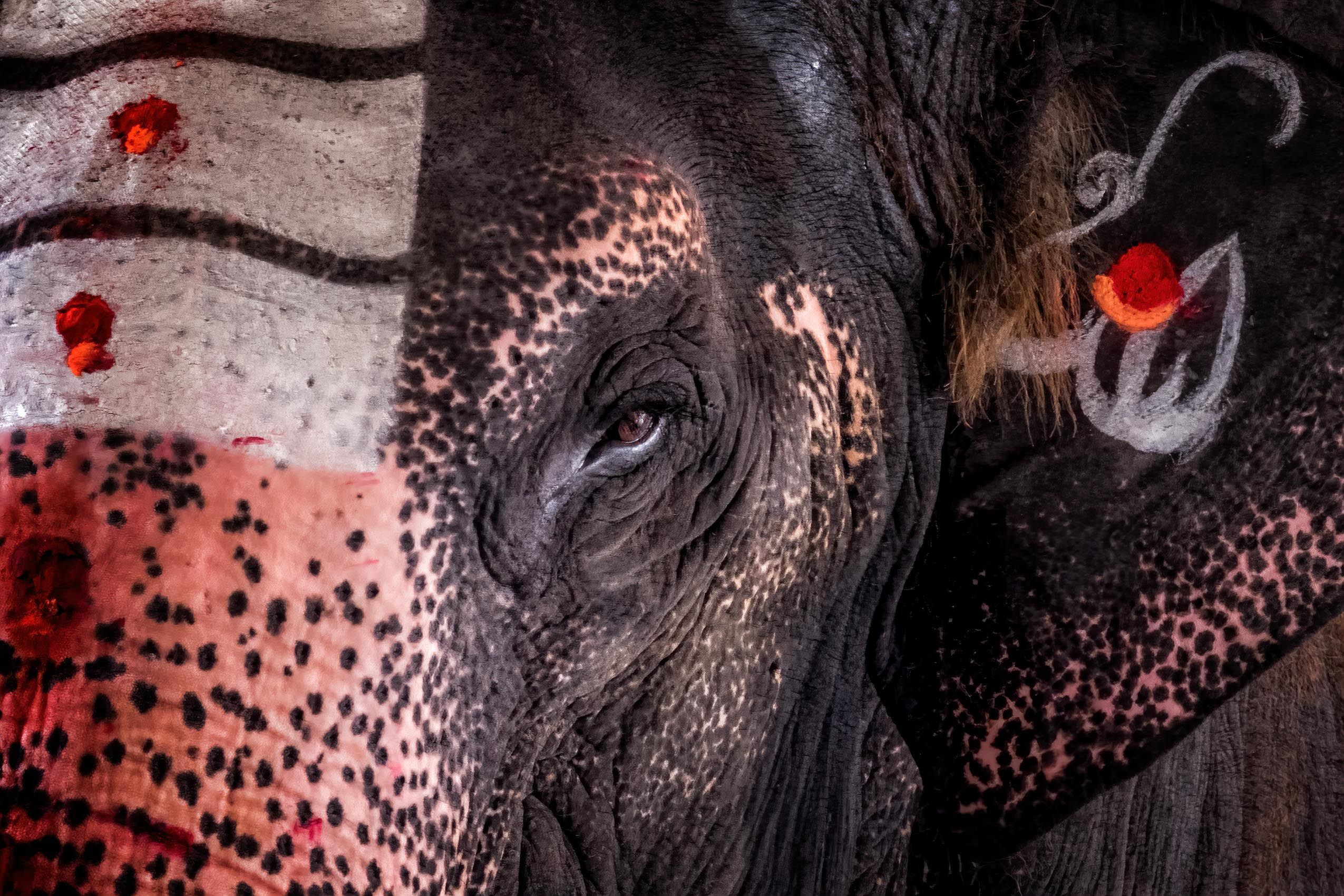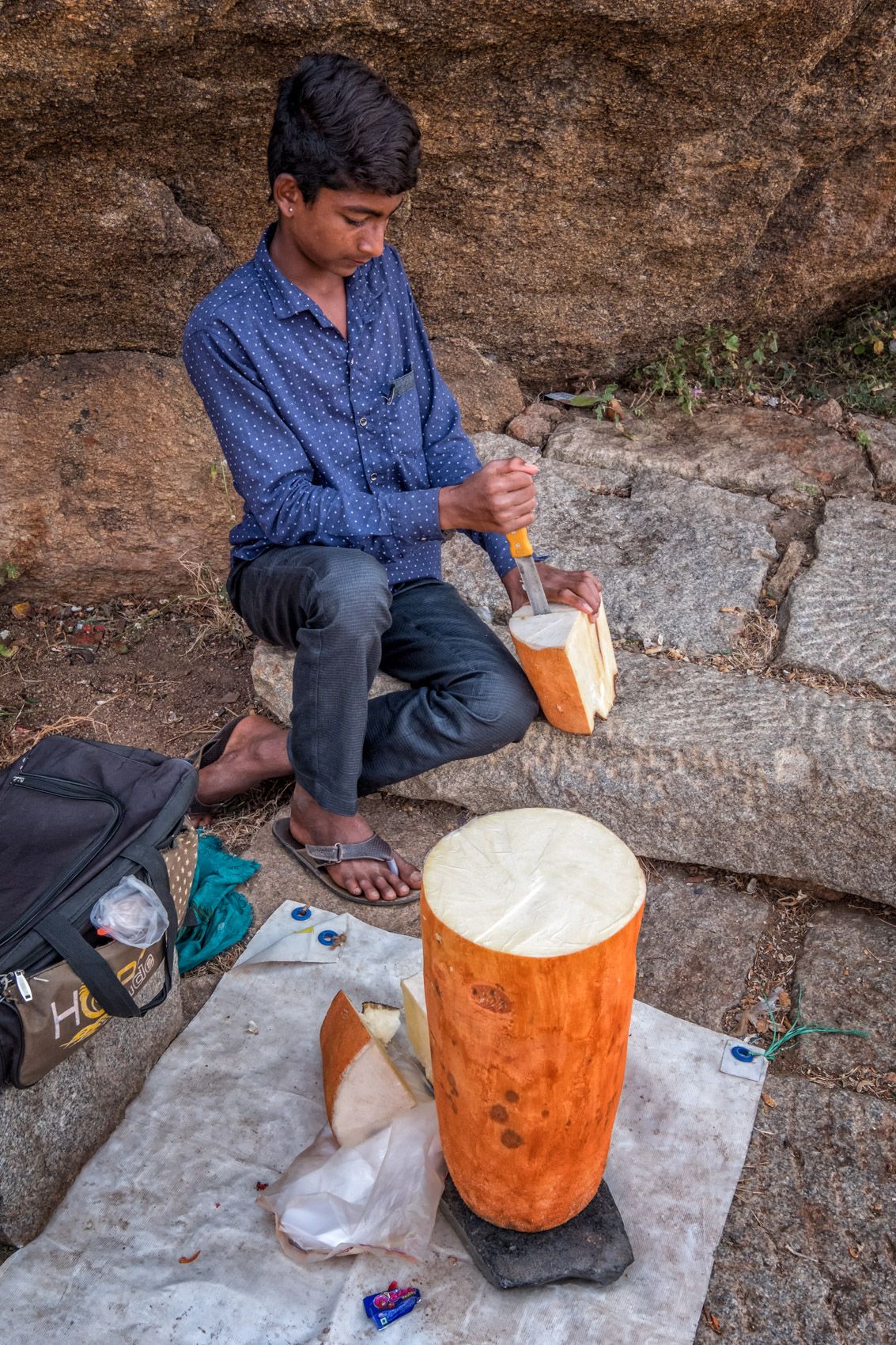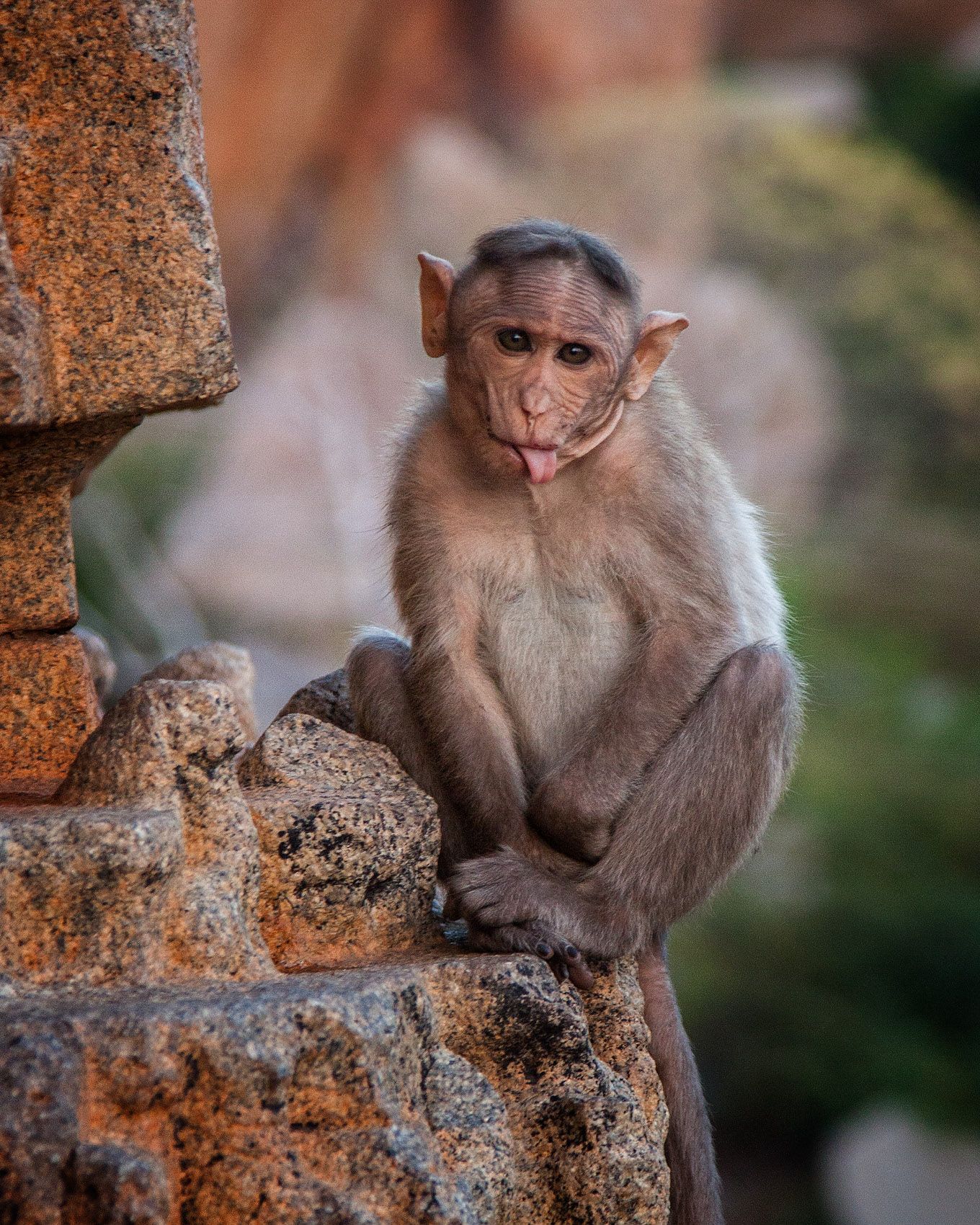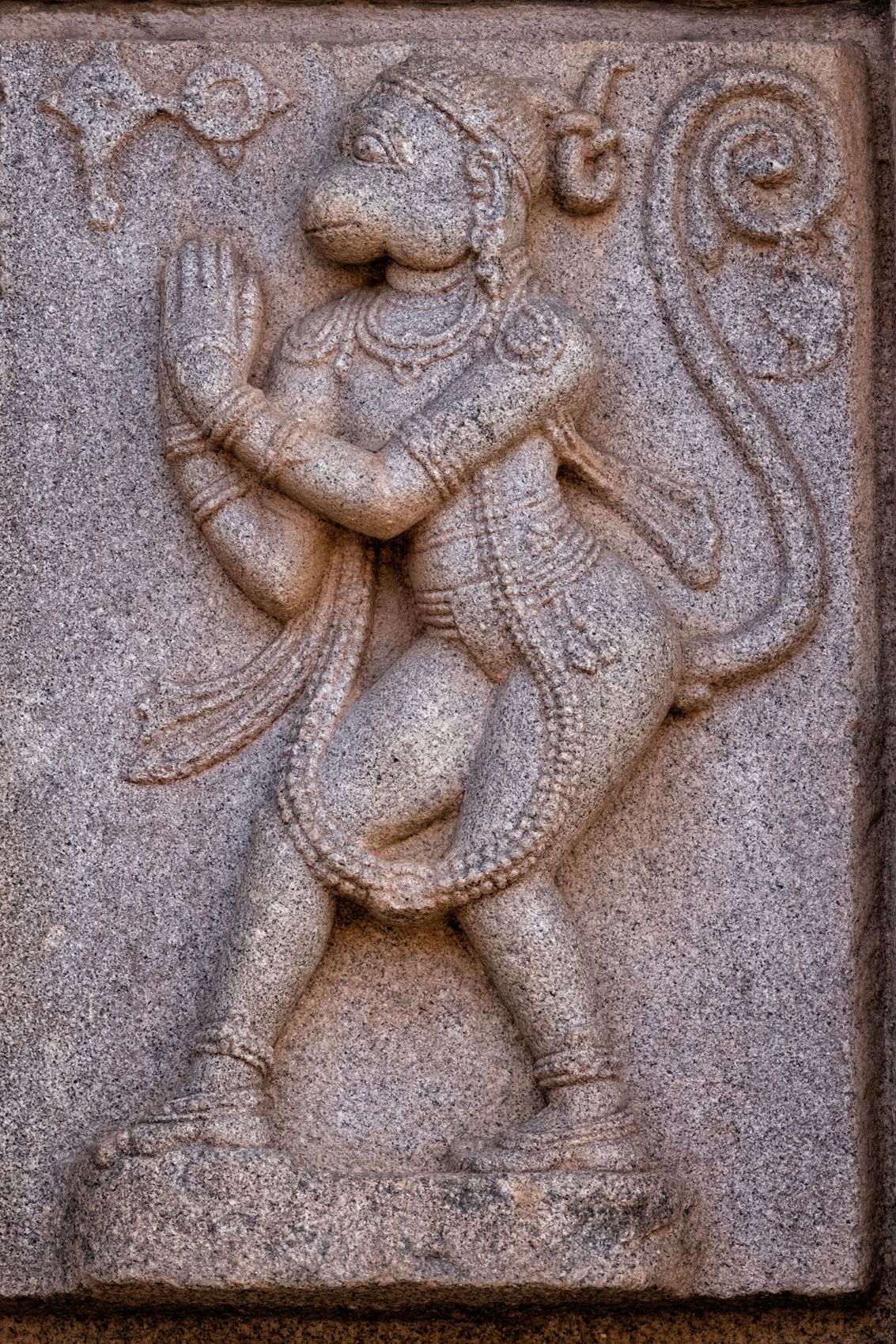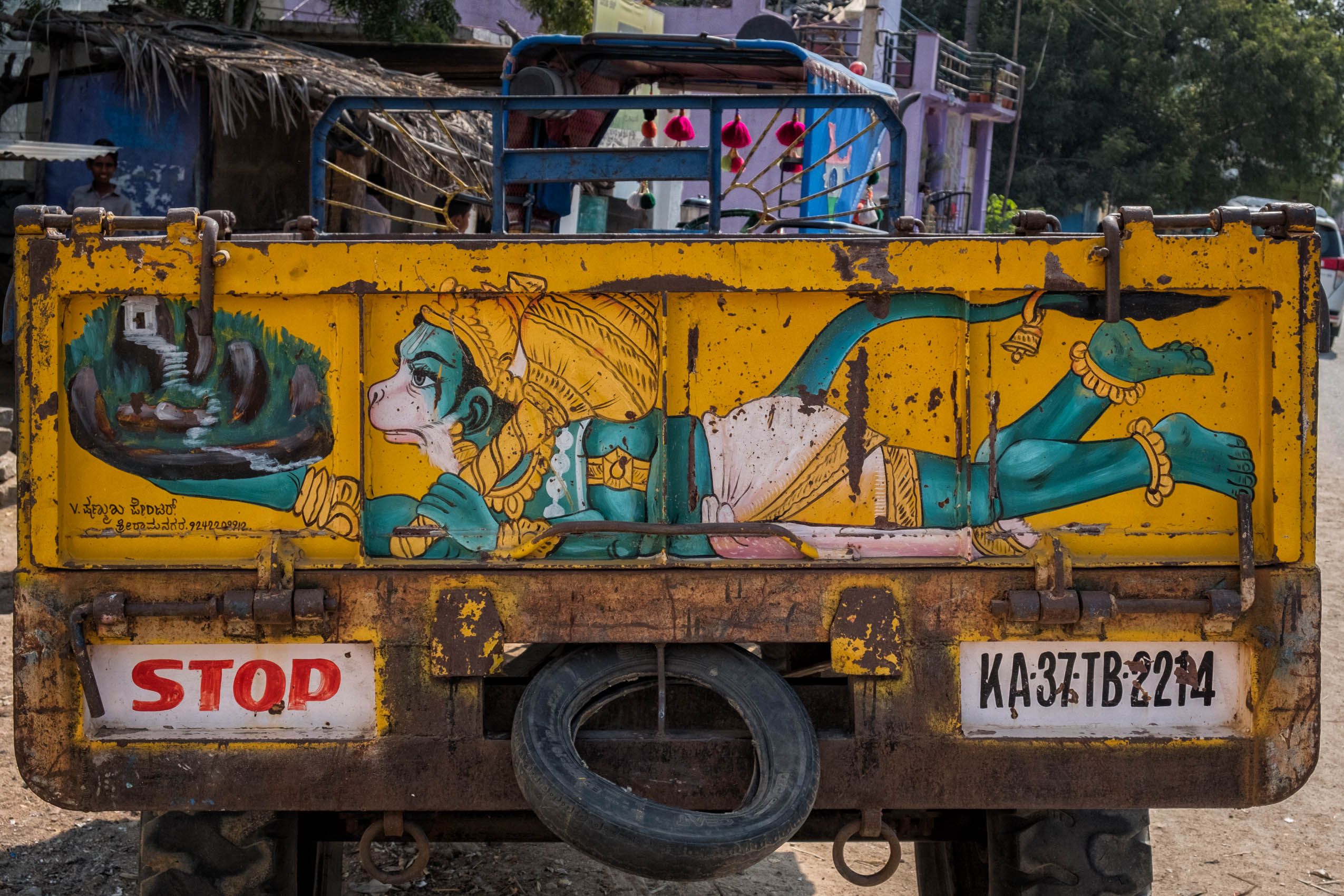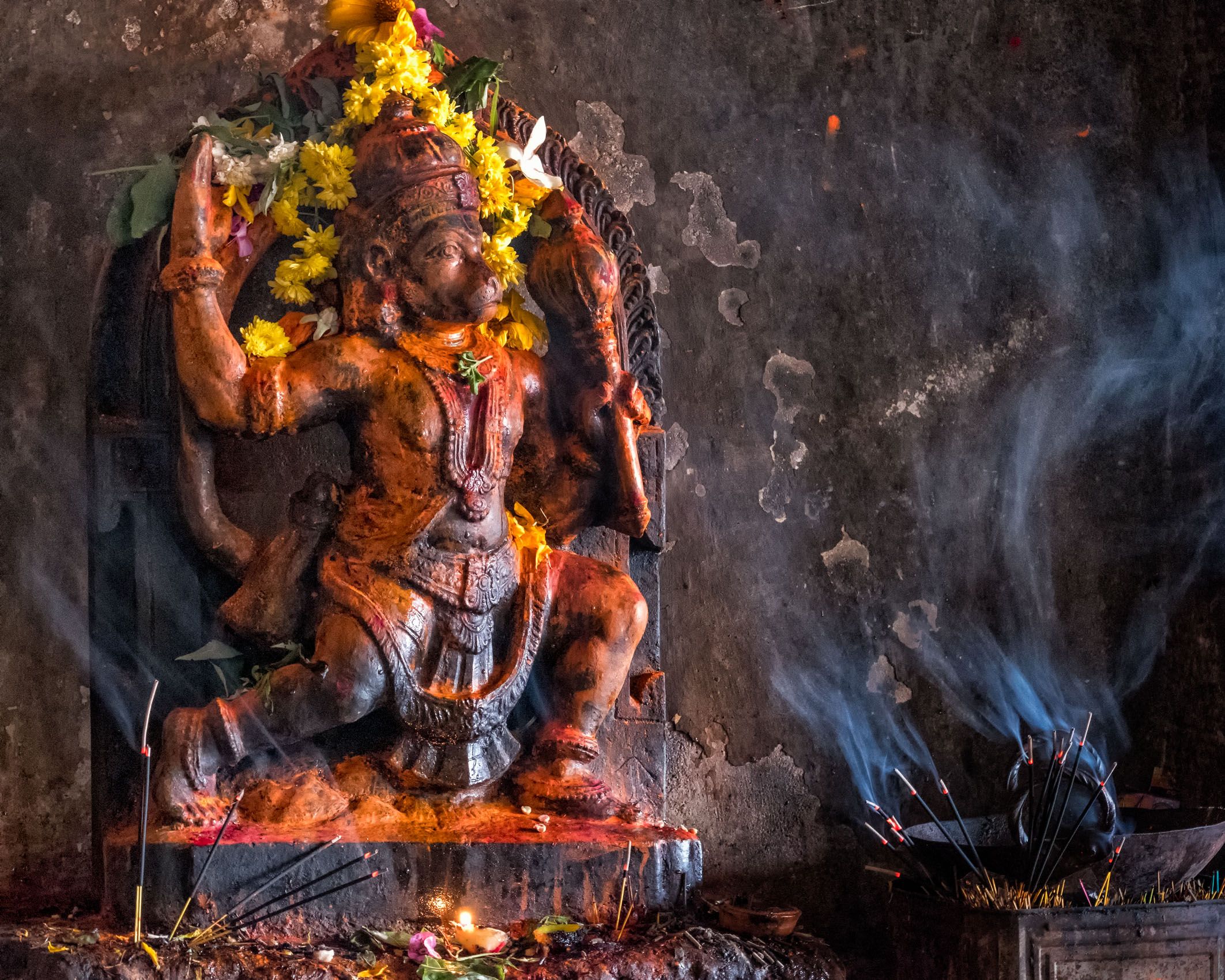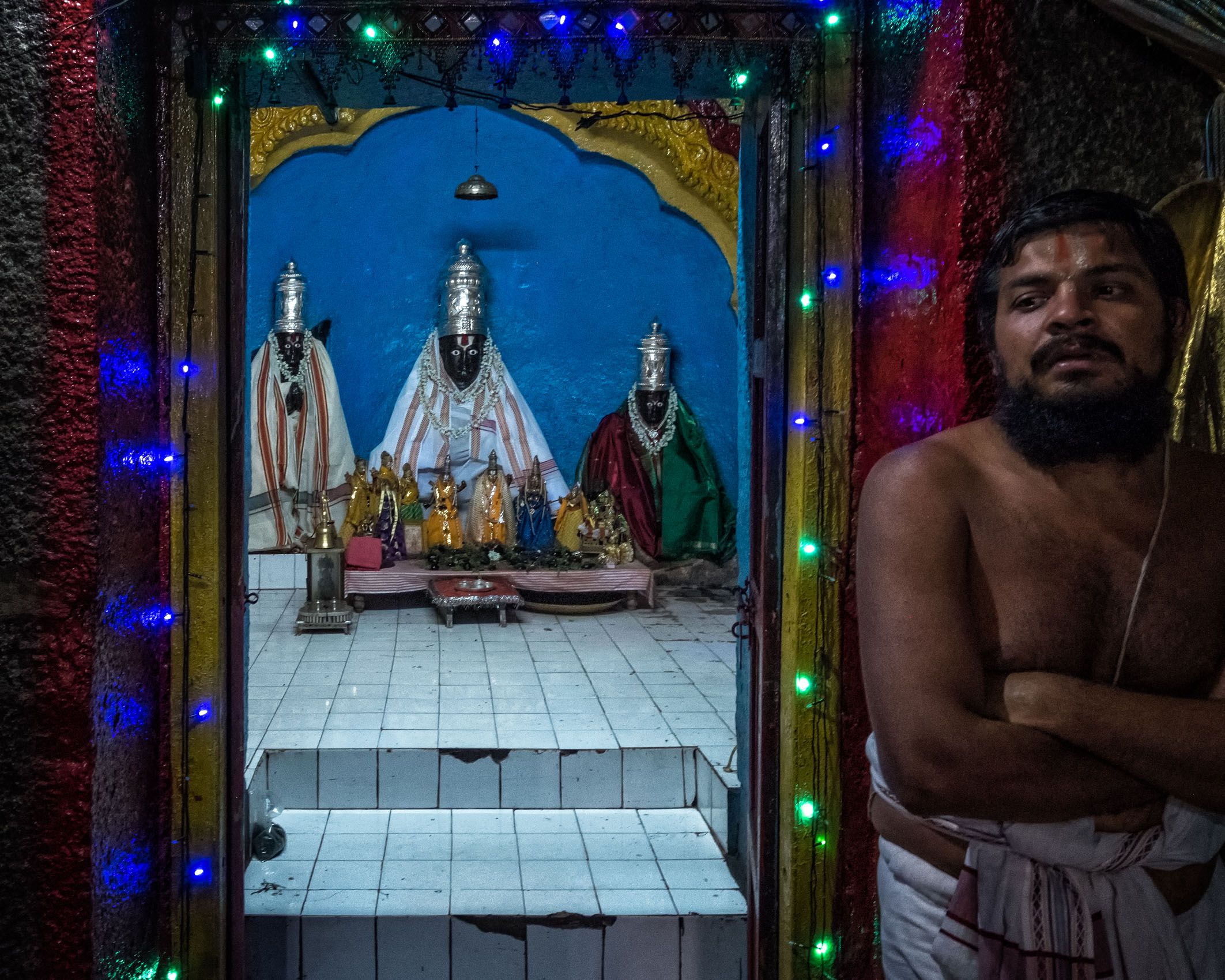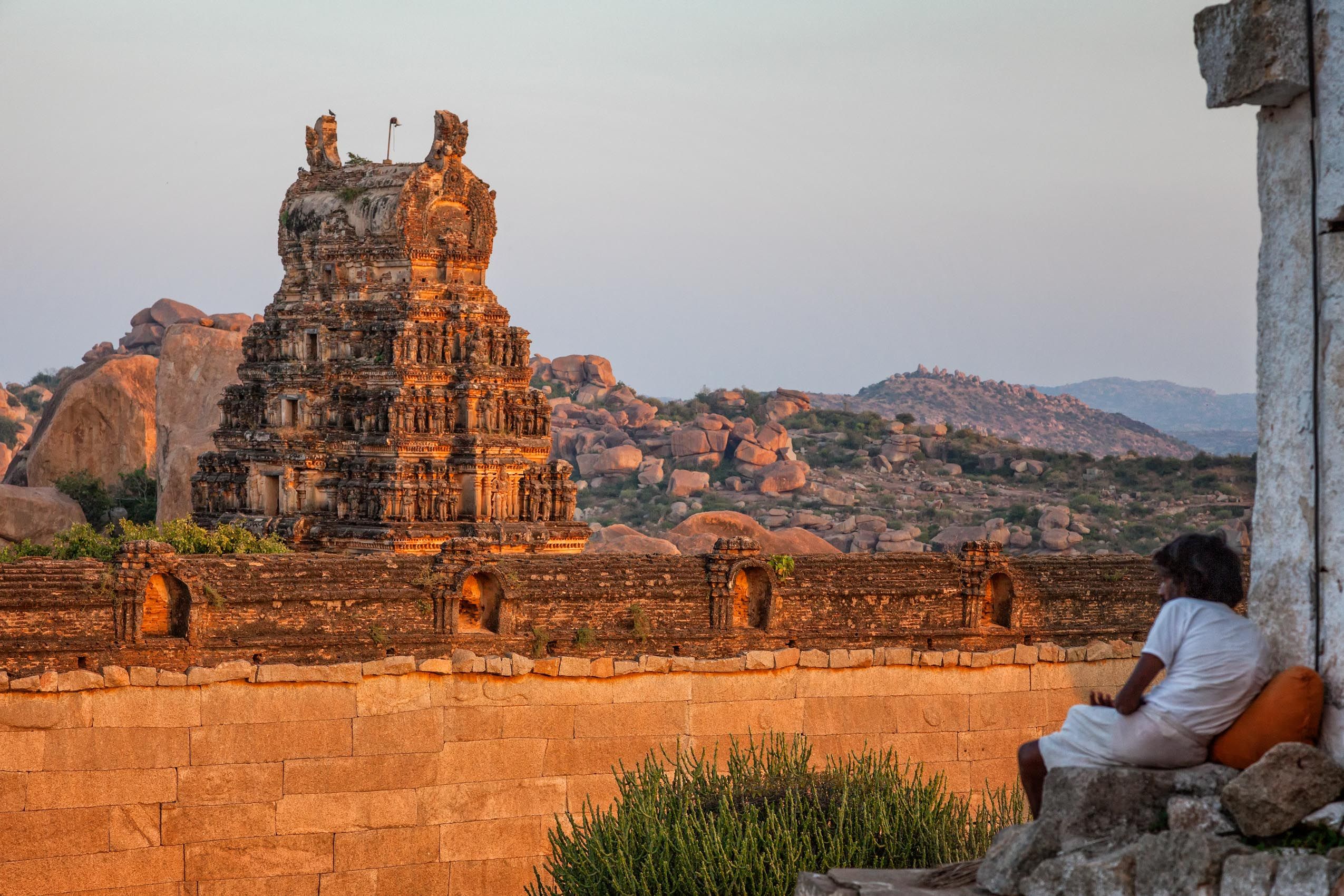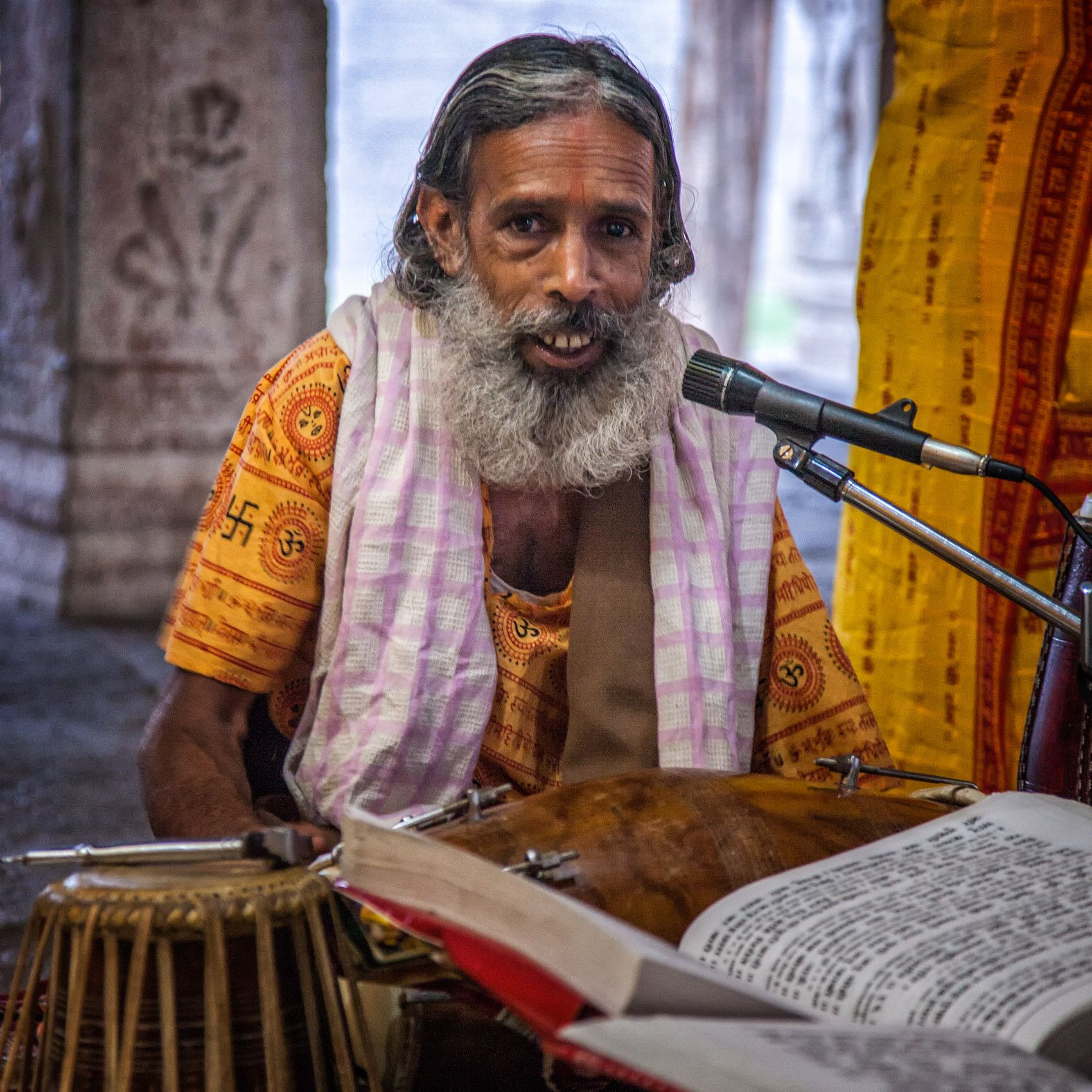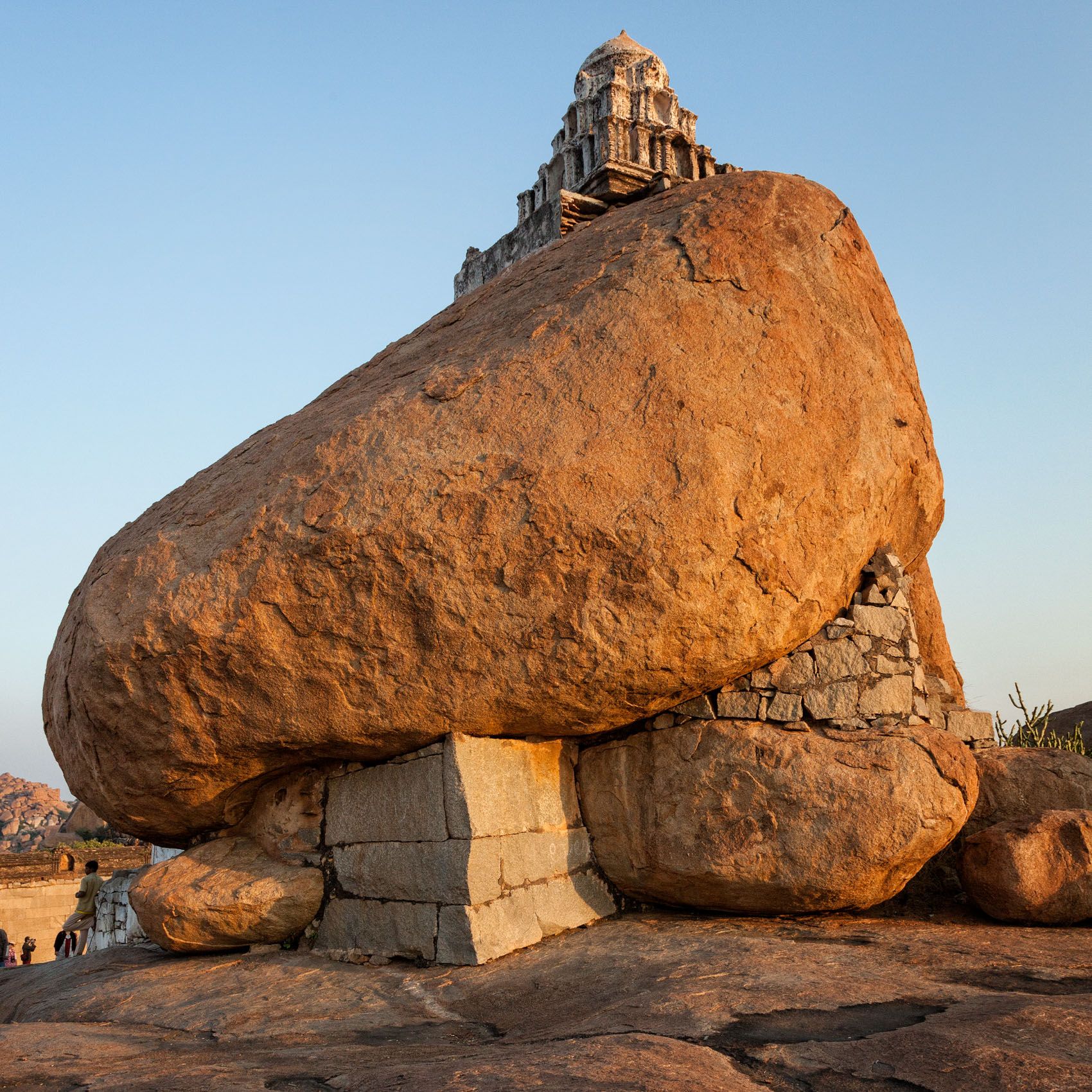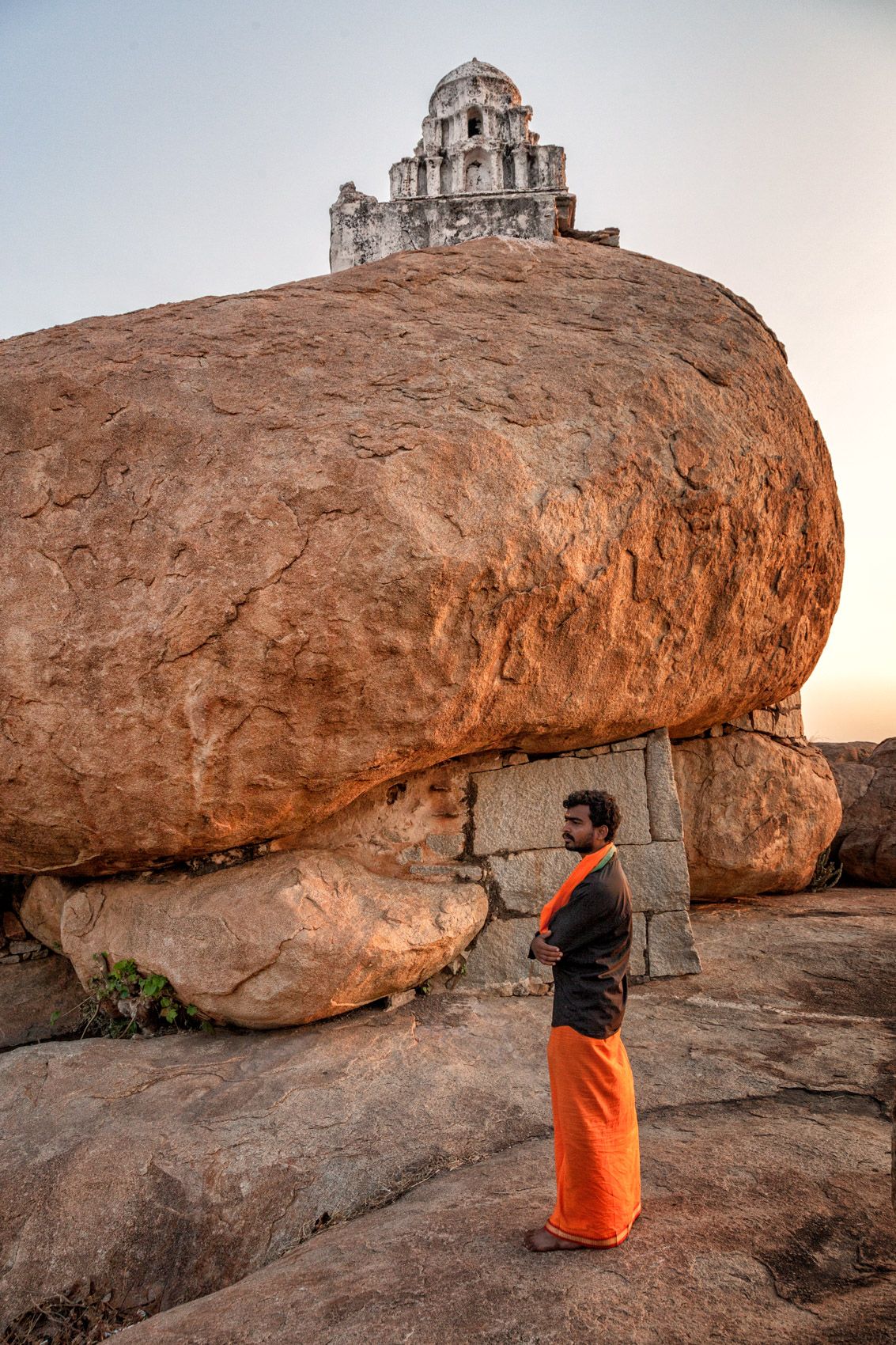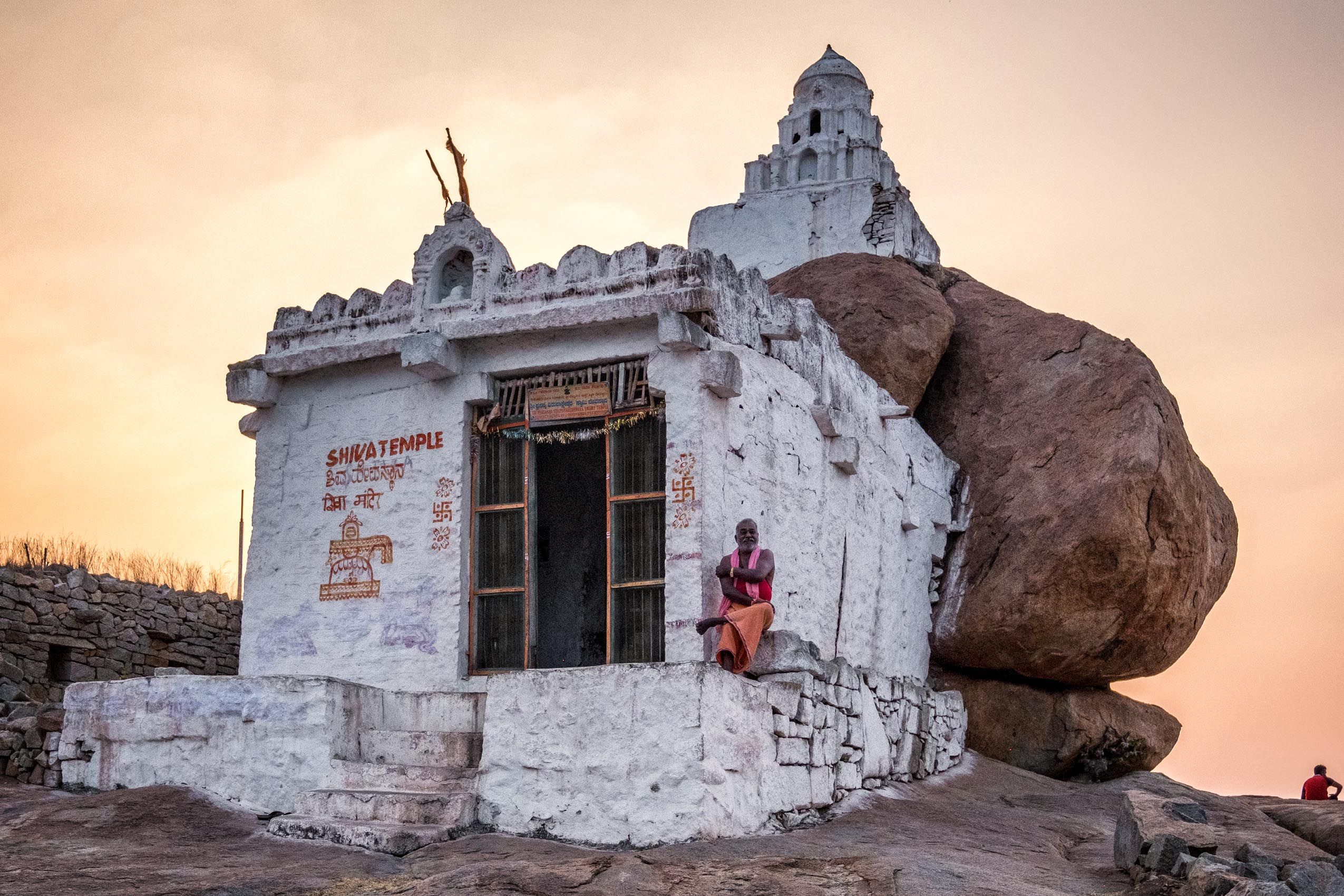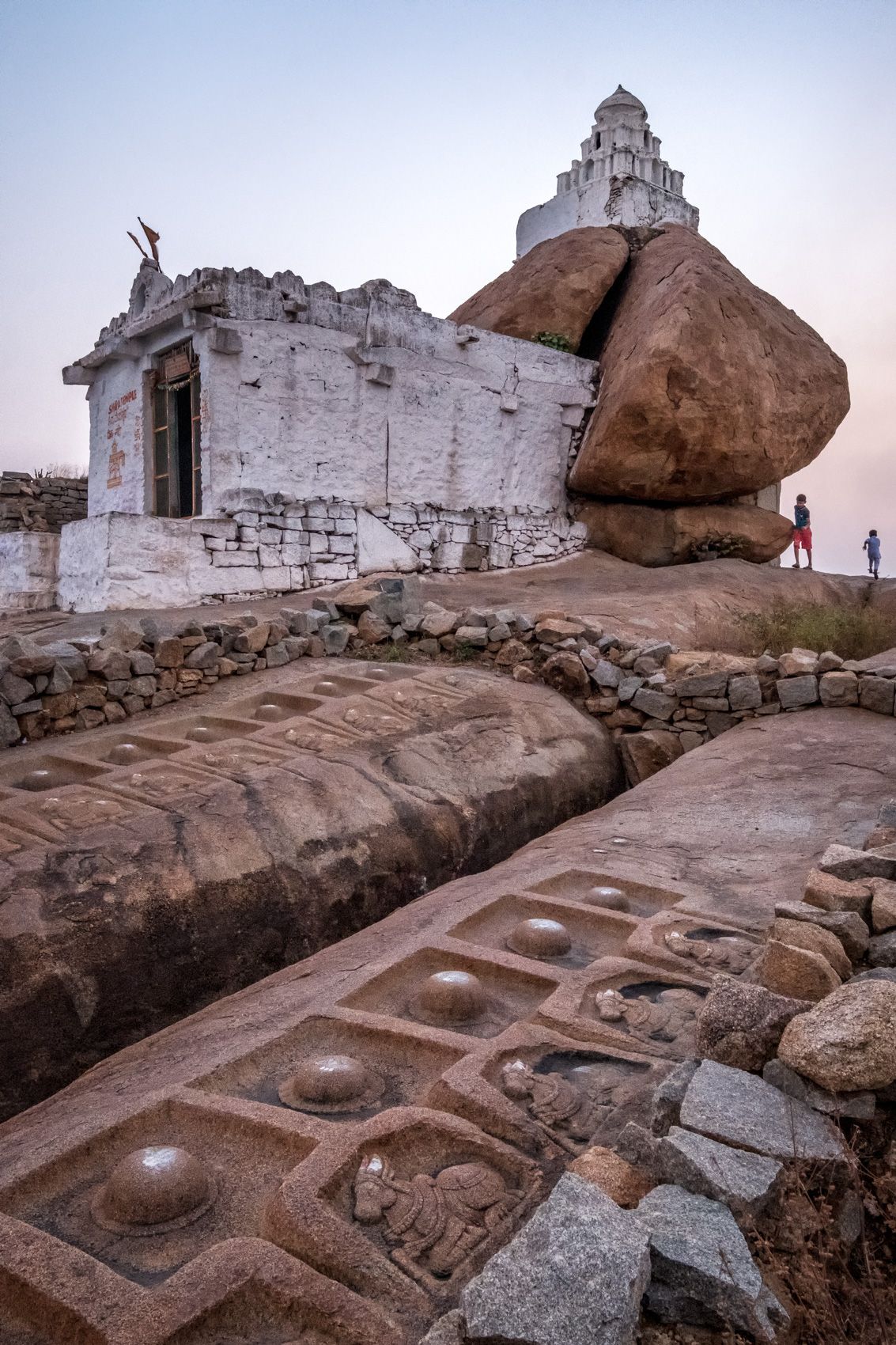Hampi, A Spiritual Landscape
Between the mid fourteenth and mid sixteenth centuries, a Hindu empire flourished in what is today a remote area of northern Karnataka, with its capital a city called Vijanagar (“City of Victory”). The city was abandoned in the mid sixteenth century following the defeat of the Vijanagar kings by the Deccanate sultans. Today, the ruins of this great city—its temples, palaces, streets, statues and sculptures—constitute one of India’s most important historical and artistic sites. But the remains of Vijanagar are only one aspect of what makes Hampi remarkable and distinctive. For Hindus, the area is deeply resonant because it figures in the Ramayana, the great epic on the life and exploits of Rama, one of the most important avatars of the great god Vishnu. Hampi is identified with the Ramayana’s Kishkinda, the forest home of the monkeys who aided Rama and his brother Lakshmana to rescue Rama’s wife, Sita, from the demon king Ravana. It was here that the grieving Rama spent many months during his quest, aiding Sugriva to secure the monkey kingdom and gaining the devotion and assistance of Hanuman in the rescue of Sita. The presence of the monkey god Hanuman and of Vishnu’s heroic avator Rama is pervasive in Hampi, in its active temples and shrines, in paintings and bas relief sculptures—even, as can be seen here, in the decoration of farm vehicles and the purveying to pilgrims of slices of a huge tuber identified as the forest food of Rama during his exile and called Ram Kandmool. Finally, it must be added that this mythologically, religiously and historically saturated site is set in a spectacular natural landscape of hills and forests (and, today, lush banana plantations), rivers and lakes, and vast numbers of huge, smooth boulders. The images in this essay, made during visits in 2010 and 2018, attempt to convey a brief sense of this special place.











